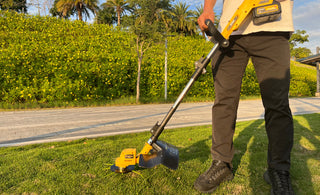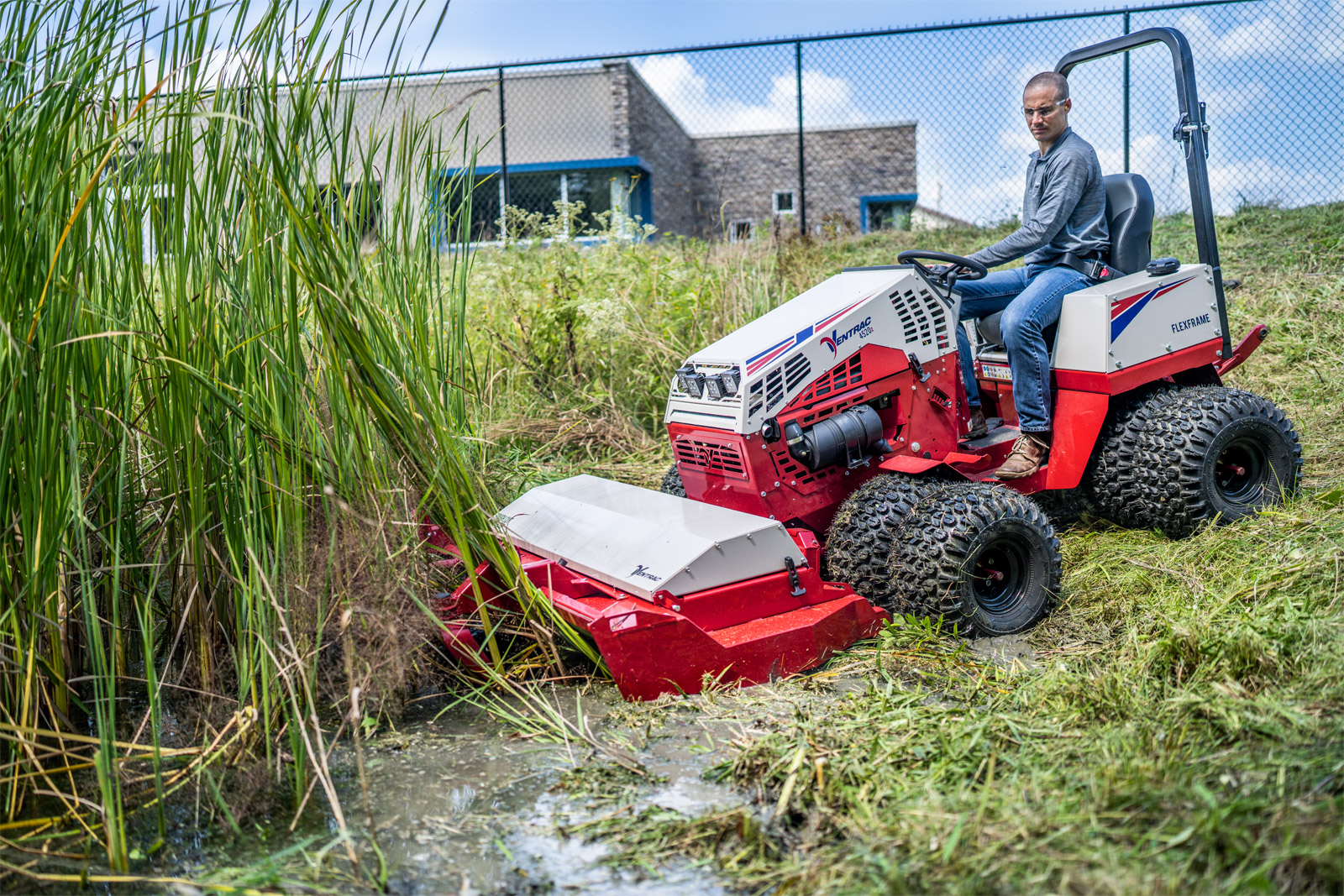As an Amazon Associate, I earn from qualifying purchases.
Tackling thick vegetation can be tough without the right tools. A brush cutter simplifies this task greatly.
Handling thick vegetation requires a brush cutter. This powerful tool helps you clear overgrown areas effectively. Whether you’re dealing with dense weeds, tall grass, or small trees, a brush cutter gets the job done. But using it properly is crucial for safety and efficiency.
In this guide, you’ll learn essential tips for using a brush cutter. From choosing the right blade to safety precautions, we’ve got you covered. Ready to make your yard work easier and more efficient? Let’s dive into the world of brush cutters and learn how to manage thick vegetation like a pro.
Choosing The Right Brush Cutter
Different brush cutters serve different needs. Handheld brush cutters are good for small areas. Walk-behind brush cutters help cover larger spaces. Tow-behind brush cutters attach to vehicles for really big jobs. Each type has its own advantages.
Brush cutters can run on different power sources. Gas-powered brush cutters are very strong. Electric brush cutters are quieter and lighter. Battery-powered brush cutters are easy to move around. Each power source has its own benefits.
Safety Precautions
Always wear protective gear when using a brush cutter. Safety goggles protect your eyes from flying debris. Gloves keep your hands safe. Long sleeves and pants protect your skin. Sturdy boots prevent foot injuries. Ear protection is also important as brush cutters can be loud.
Check the area for hidden obstacles like rocks or wires. Hold the brush cutter with both hands. Keep a firm grip on the handles. Maintain a steady pace while cutting. Never use the brush cutter near people or pets. Always turn off the machine before making adjustments.
Preparing The Area
Remove any loose sticks, rocks, and trash. These can damage your brush cutter. Check for anything that could get tangled. This includes wires or ropes. Clear all small plants and weeds first. Ensure the area is safe for work.
Identify large rocks and tree stumps. Mark these with bright tape or paint. Use flags for marking if needed. Make sure these are clearly visible. This helps you avoid accidents. Always wear protective gear. Safety first!
Starting The Brush Cutter
Fill the tank with fresh fuel. Use the right mix of oil and gas. Check the oil level before starting. Ensure the fuel cap is securely in place. This prevents leaks. Always store extra fuel safely.
Place the brush cutter on a flat surface. Press the primer bulb several times. This helps fuel flow. Set the choke to the start position. Hold the cutter firmly. Pull the starter rope quickly. Move the choke to run position once the engine starts. Let it warm up for a minute. This ensures smooth operation.
Cutting Techniques
The correct cutting angle is very important. It helps you cut thick plants easily. A 30 to 45-degree angle works best. This angle helps the brush cutter slice through plants smoothly.
Always keep the blade sharp. A sharp blade cuts better. It also makes less noise. Ensure the brush cutter is moved slowly. This way, you can avoid getting stuck in thick vegetation.
Thick vegetation can be very tough. You need to use the right technique. Start by cutting the top layer first. This makes it easier to cut the lower layers. Use slow, steady movements.
Try not to rush. Cutting too fast can damage the brush cutter. It can also hurt you. Always wear safety gear. Gloves and goggles are important. They protect your hands and eyes.

Maintaining The Brush Cutter
Easily handle thick vegetation with a brush cutter by ensuring the blade is sharp and well-maintained. Regularly check the engine and fuel levels for optimal performance. Adjust the handle to maintain comfort and control during use.
Cleaning And Storage
Clean the brush cutter after every use. Remove dirt and debris from the blades and body. Use a damp cloth for wiping. Dry the tool thoroughly to prevent rust. Store the cutter in a dry place. Keep it away from moisture. Hang it up if possible to save space. Regular cleaning extends the life of the cutter. Always check for loose parts.
Blade Sharpening
Sharpen the blades when they get dull. Use a sharpening stone or file. Follow the blade’s angle for best results. Dull blades can damage plants and strain the motor. Check the blades for nicks and cracks. Replace them if necessary. Sharp blades make cutting easier and faster.
Troubleshooting Common Issues
The engine won’t start? Check the fuel. Is there enough? Old fuel can cause issues too. Replace it if it’s over a month old. Look at the spark plug. Is it dirty or damaged? Clean or replace it. Air filters can clog. Check yours. Clean or replace it as needed. Choke settings matter too. Ensure it’s set correctly. Lastly, inspect the carburetor. Adjust if necessary.
Is the brush cutter not cutting well? Inspect the blades. Dull blades won’t work well. Sharpen or replace them. Check for debris. Sticks and stones can jam the blade. Clear them out. Look at the cutting height. Adjust it for better results. Ensure the shaft isn’t bent. A bent shaft can affect performance. Lastly, ensure the engine power is enough for thick vegetation.
Eco-friendly Practices
Using a brush cutter can be harsh on the environment. Choose tools that use less fuel. This helps the air stay clean. Always check local rules before cutting. They protect plants and animals. Avoid cutting during bird nesting seasons. This keeps baby birds safe. Use biodegradable oils for your machine. They break down and don’t harm the soil. Make paths for your cutter. This prevents damage to other plants. Use hand tools for small jobs. They are kinder to the environment.
Don’t let cut plants pile up. They can harm other plants. Compost the cut vegetation. It turns into soil food. This helps your garden grow. Some cities pick up yard waste. Check if yours does. Burn only if allowed. Smoke can hurt the air. Create mulch from the cut plants. It keeps soil wet and reduces weeds. Share extra mulch with friends. They will thank you.
Frequently Asked Questions
What Is A Brush Cutter Used For?
A brush cutter is used for cutting thick vegetation. It can handle heavy weeds, tall grass, and small trees.
How Do You Safely Use A Brush Cutter?
Wear protective gear. Follow the manufacturer’s instructions. Keep a firm grip on the tool. Maintain a safe distance from others.
What Types Of Blades Are Best For Thick Vegetation?
Heavy-duty blades are best for thick vegetation. Look for metal blades designed for brush and small trees.
How Do You Maintain A Brush Cutter?
Regularly clean the cutter. Sharpen the blades. Check and replace worn parts. Store in a dry place.
Can A Brush Cutter Handle Small Trees?
Yes, a brush cutter can handle small trees. Use the appropriate blade for cutting through thicker wood.
Conclusion
Handling thick vegetation with a brush cutter can be a straightforward task. Select the appropriate brush cutter for the task. Always wear safety gear to protect yourself. Follow proper cutting techniques for best results. Regular maintenance keeps your brush cutter in good shape.
Practice makes you better and faster. With these tips, you can easily manage thick vegetation. Remember, safety and proper use are key. Happy cutting!

